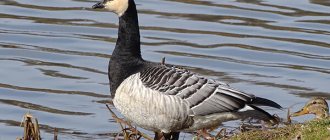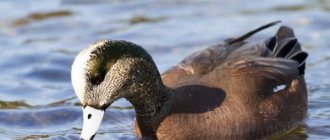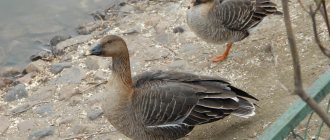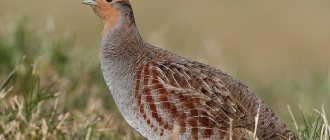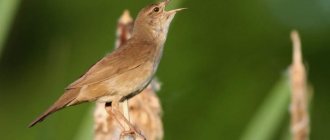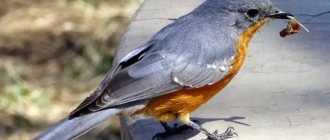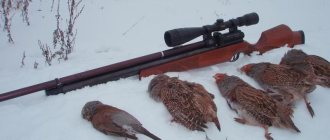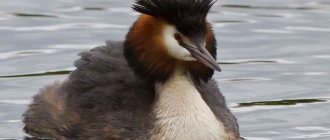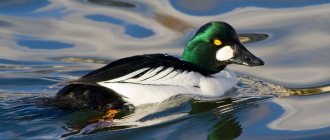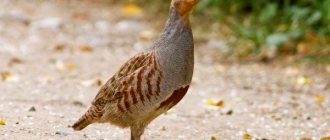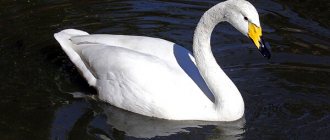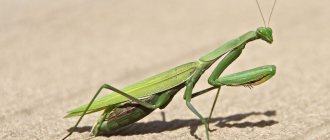Many of us are not even aware of the existence of such a duck as the scoter. Sometimes even the hunters don’t know her. Birds live in places where people are not frequent visitors. Even in Aksakov’s notes this breed is not mentioned. This species belongs to the order Lamelidae. And its individuals are considered the largest among ducks.
Many of us are not even aware of the existence of such a duck as the scoter.
Features and habitat
The scoter bird is a large wild duck, the males of which have mourning black plumage, with the only exception being white flight feathers. At the base of the dark to the middle peck with large nostrils there is a very strange bump, which makes this bird a hook-nosed bird.
The icy gaze of the white eyes, as can be seen in the photo of the scoter , gives the feathered animal an impressive gloomy appearance, and the paws with wide membranes are located at a close distance from the tail. In the duck family, to which the birds belong, they are considered the largest birds. Drakes of this species have bright red paws, reach a length of up to 58 cm and weigh up to one and a half kilograms.
Female individuals weigh slightly less, in addition, they have a lighter, brown or dark brown color of plumage, completely covered with variegated flakes. Their beak, black at the base, becomes gray at the end, white spots under the eyes, paws with black membranes are distinguished by an orange-yellow tint.
Turpan lives in the north of Eurasia and America. The habitat where they spend the bulk of their lives is arctic tundra, rocky islands and alpine meadows with boulders. These birds usually choose deep mountain, steppe and forest lakes, rich in reed thickets, for their location.
Preferring fresh water bodies, birds do not completely avoid water areas with brackish water. These feathered creatures are divided by biologists into several subspecies. The common scoter has a short neck; a white spot on the wing, clearly visible during the flight of the bird; marks of the same color on the sides of the head.
In the photo the bird is a common scoter.
During the mating season, drakes are distinguished by a bright orange beak. The described species of wild ducks is quite common in Russia, although the population of birds is constantly declining. The humpbacked scoter differs from its relatives by the presence of a black horny growth on its beak. Nests of such birds can be found in the taiga and forest-tundra on grassy swamps and lakes.
Pictured is a humpbacked scoter
The birds live east of the Yenisei River in the mountains, spending the winter near the seas of the Far East. The habitat of the black scoter extends from the Scandinavian Peninsula to the Khatanga River.
In the photo there is a black scoter bird
The spotted scoter builds nests on the territory of the North American continent, going to the waters of the Pacific and Atlantic Oceans for the winter. These birds often make long flights, reaching the coasts of Scotland and Norway.
This subspecies among its relatives is not large in size, reaching a length of no more than 50 cm, and a body weight usually not exceeding 1.2 kg. The bird received its current name for the variegated colors of its beak, consisting of red, white and black.
Pictured is a spotted scoter
Turpan - “sad” duck
Turpan is an unusual creature.
The first thing that strikes the eye of someone who sees her for the first time is her “mourning” appearance. Its impressive features are its almost charcoal black plumage , on which the white feathers stand out brightly. The duck also has very large nostrils and a humped beak with a bump.
Description
But the main distinguishing feature, which is why most people nicknamed her the “sad duck ,” are her icy white eyes.
They give the bird a bleak and mournful appearance. However, such external data does not at all affect her character. This is a completely calm and, so to speak, “harmless” feathered individual. The scoter is one of the largest ducks. Males reach a weight of up to one and a half kilograms, and the wingspan reaches 90 cm. Females are smaller in size. They weigh up to 1.2 kg.
If the males of the humpbacked scoter are black in color , then the females have motley-brown plumage, and their beak is slightly longer, without a hump. Their paws, like those of males, are the same orange, only not as bright.
By the way, the scoter has a lot in common with such a species of birds as the loon. Both the scoter and the loon have feet located close to the tail.
We also recommend reading:
Don't feed the ducks - they're still flying... Keeping ducks in winter. Keeping an Indian duck at home Gray duck: description of the bird, reproduction, nutrition Duck breeds for home breeding
Gallery: duck scoter (25 photos)
Habitats
The main habitat of scoters is the north of America and Eurasia.
The loon can also be frequently spotted in these areas. The duck mainly settles where there are large bodies of water or on islands where there is very lush and dense vegetation. The bird also feels good in places such as:
- coniferous forests;
- forest-tundra;
- arctic tundra.
But the scoter duck prefers to winter in the warmer environs of Russia, more precisely, on the Black or Caspian Seas. The loon often spends its winters in these same places.
In preparation for a long and cold winter, humpbacked scoters gather in flocks in advance. Most often these are small groups, but often ducks dare to travel long distances and in single pairs . When flying to warm regions, they often make short stops at fresh lakes.
Feeding birds
Due to the fact that the humpbacked scoter mainly lives where there is a lot of water, it mainly feeds on:
- small fish;
- shellfish;
- insect larvae.
However, they do not refuse plant foods, and this is:
- grain crops;
- grass;
- roots;
- many types of plants.
For the most part, these species of birds love a mixed type of food. Their basic diet is very similar to what loons like to eat.
Character and lifestyle
The scoter duck is a waterfowl and migratory bird. Birds prefer to inhabit the shores of small bodies of water and islands rich in thickets of thick grass. For the winter they go to the shores of the Caspian, Black and other seas located south of their usual habitat.
During such periods, in shallow coastal waters, wild ducks form flocks, going on long journeys, during which they prefer to stop at fresh lakes. Flocks of scoters can be small groups, but the feathered creatures also often make long journeys in solitary pairs.
During wintering at sea, these wild ducks feed well, gaining significant weight and accumulating fat deposits. But returning to their homeland in the spring, they often become the prey of northern hunters, who consider their dark meat tasty.
The down of this bird, capable of maintaining its qualities for a long time, is also highly valued. Spring hunting for scoters is great entertainment for lovers of this type of activity. But few hunters are aware of such feathered prey, since the described bird is not common in all regions.
The voice of a drake is extremely rarely heard by a stranger. But if you're lucky, you can discern a sharp clicking sound similar to a loud exhalation. Females usually scream during flight, producing low burr sounds.
Despite the gloomy appearance, the bird has a fairly calm character. Thanks to the webbed feet, the large wild duck swims well. And during periods of molting, the scoter even tries to stay in open water as much as possible.
Turpan in the Red Book
Observing the numbers, migration, and nesting of scoters, ornithologists noticed a sad trend of population decline. This was the reason for their inclusion in the lists of protected species in the Red Book of the Soviet Union.
Subsequently, a number of states also introduced a ban on hunting and the sponsorship of a number of measures to protect birds during wintering and nesting.
Main causes of extinction
Active drainage of swampy areas of river floodplains, which began in the Soviet Union, has continued to the present day, which has caused the disappearance of the main component in the diet of scoters.
Their diet consists of valve mollusks and invertebrates living in shallow water environments, which die when water bodies drain. During heavy rains, chemical fertilizers are washed off the fields, which, when released into water bodies, also poison the living food of scoters.
The reason for the decline of the species can be attributed to the active use of wintering places by humans, whose activities displace them from their usual habitat.
Current population situation
Currently, the danger to this bird species is assessed as category two. It is characterized as a rare species with a sharp decline in population size.
Do you need to take protective measures?
In our country, as well as in Kazakhstan, hunting for scoters is officially prohibited. This is especially true in autumn and spring, when the bird flies away for the winter and begins nesting. In addition, conversations are being held with the population about the ban on fishing with large nets in local reservoirs.
It is also desirable to reduce measures to drain forest and taiga reservoirs where ducks live. Help for this type of waterfowl includes the activities of volunteers from societies for the protection of animals and birds. The floating feeders with mixed feed containing the required set of microelements have proven their effectiveness.
Nutrition
Within 24 hours after they are born, the mother takes her chicks to the water, where they swim in shallow water to learn how to get their own food. The diet of these feathered creatures includes a variety of mollusks, small fish, aquatic plants and insects.
To catch its prey, the scoter dives to a depth of several tens of meters, while being able to stay under water for about one or more minutes. At depth they feel great and move easily, moving their wings and paws. Often small groups of these birds, presenting an interesting spectacle, dive synchronously, as if on command, in the hope of finding the desired food at depth.
Description of the bird
The common scoter is in the Red Book of Kazakhstan, Bashkortostan, Kurgan region, and the Middle Urals. This is a waterfowl from the order Anseriformes, the duck family. It is also called the Siberian scoter.
What does it look like
It is similar to the singa, but the physique is more massive. The head is held vertically, with the chest thrust out. The neck is very short. The beak is large, swollen in the middle part. The body is sixty centimeters long, the wingspan is almost a meter. Weighs about one and a half kilograms.
The color of the feathers is black, with the exception of a white dot above the upper eyelid and under the eye. The beak of males is 5 cm, in females - 4 cm, wide, swollen in the middle with well-defined nostrils. The breeding color of males is black with a bluish tint on the head and back.
The summer color of the male is slightly lighter, brown. The legs of the male are red, the legs of the female are dark yellow. The female is brown in color, with white feather tips on her belly. She has a white spot between her beak and eyes. Females have darker irises than males.
The beak of the male is red, the beak of the female is dark brown. Both sexes have a white mirror on the wings. Their hind toe has a leathery blade. When swimming, the tail hangs low. Unlike the bluefin, it has a white mirror and spots on the side of the head.
Varieties
The most famous species is the humpbacked scoter. In Latin its name is: Melanitta deglandi. So he was named in honor of the biologist from France K.-D. Deglana.
It differs in appearance from the common scoter by a very prominent growth on the beak, as well as by extending feathers from the cheeks to the beak. Lives in North America and Eastern Siberia. Winters in Korea and the Far East.
- Melanitta fusca fusca is another subspecies, lives in Scandinavia, on the Yenisei. Wintering takes place in the Caspian Sea.
- Melanitta fusca stejnegeri is also a species of scoter, lives in Asia and the Far East. They can often be found on the Lena River.
Character and lifestyle
Likes to live in the tundra and taiga, in steppe lakes and on sea coasts. This is a migratory bird. It gathers to nest in pairs on forest lakes overgrown with sedge. Turpans that do not want to reproduce can spend all their time in a flock, almost without leaving the water.
They fly low over a body of water, and in case of danger they immediately dive into the water. They love to swim. During feeding, it dives under water and very rarely appears on the surface. He sings ugly, croaks rudely: “kra-kra.”
What does it eat?
He loves shellfish, small fish, and larvae of aquatic insects, which he finds in and under water. At the same time, he dives to a depth of up to ten meters and gets food from there. You can stay underwater for a minute. Rarely comes onto land, where it feeds on the leaves of plants and shrubs.
Where does it live?
Based on the nature of its habitat, the bird can be classified as a northern group of waterfowl. The habitat is very extensive, stretching from Scandinavian Lapland to the border of the Okhotsk and Barents Seas, the Gulf of Tatar with the estuaries of the great Siberian rivers flowing into them (Lena, Yenisei).
The habitat includes the entire northeast of the Eurasian continent, Alaska, and the swamps of Canada. To provide itself with food, it settles in small swamps, lakes, ponds, preferably with banks overgrown with sedge and bushes. Recently, birds have shown interest in the more southern borders of their habitat, choosing to settle in urban water bodies.
Reproduction
Nesting occurs at the end of winter - beginning of spring when the ice and snow melt. Turpans, unlike other geese and ducks, have a unique approach to choosing a pair.
Making knocking sounds, the males dive into the water and, after swimming a few meters, emerge next to the chosen one. At the end of mating, the males rise on the wing and fly around the pond at a height of one or two meters.
Having chosen a place in dense thickets of sedge, the female begins building a nest. The building materials are branches and sedge leaves, which are insulated with its down. The clutch consists of five to eight plum-shaped eggs of olive or yellow color. At the end of the clutch, the males leave their partners and fly away in a northerly direction.
Only the mother incubates, feeds and protects the offspring. Hatching the eggs lasts almost a month and involves many risks because the nest is an easy prey for predators.
Among the most likely enemies of chicks are:
- fox;
- rats;
- raccoons;
- feathered predators.
Naturalists have noticed that in the event of the death of a duck, another female with a brood picks up the surviving ducklings, nursing both her own and the abandoned cubs. By mid-summer, the grown chicks learn to take off on their own (climb onto the wing), using the surface of the reservoir as a lifting platform.
The flights are short and in a straight line. Then they sit down on the water, needing rest. The length of the flight is increasing every day. By the end of summer, having changed the color of their feathers from striped to darker, the grown chicks are able to fly to their wintering place.
Natural enemies
The scoter has a better chance of surviving in a flock than single individuals. Together they can fight off a feathered predator (eagle, kite, golden eagle) attacking from above. On the ground, a fox can watch for a bird that is gaping or weakened from the flight. There are known cases when a predator by swimming (which is not typical for it) sneaked up on a sleepy bird.
In case of danger, the scoter makes hoarse loud sounds, flaps its wings, and the entire flock takes off. Also dangerous are hunters with dogs, who can drive a duck from the nest, which leads to the death of a clutch of eggs. A young duckling can be dragged under water by a catfish, and hatched chicks can be dragged underwater by a large snake.
Wintering
To winter, the bird flies away from its habitat 1000-1800 km in a southerly direction. Selects the shores of brackish lakes, the Caspian coasts are especially popular. In particular, the Volga delta, which offers in abundance both a wide expanse of water and an abundance of underwater food from a number of small fish, crustaceans and other invertebrate mollusks.
Turpans were also spotted off the coast of the Black and Azov Seas, namely the waters of the Yeisk estuaries, as well as places along the coast of the Taganrog Bay. During the winter, the bird tries to stay in a flock, not approaching the dangerous shore. For recreation, he uses any type of swimming equipment; he goes out onto ice floes, the edges of which are separated from the shore by the flow of channels.
Bird reproduction and lifespan
Such birds, reaching sexual maturity by the age of two, build nesting grounds for their young, returning to their homeland after wintering. To create families, they unite in pairs, which are often formed during the spring migration or soon after arrival, and sometimes even earlier, in the places where they spend the winter.
During the courtship period, several drakes surround their chosen ones and, trying to please them, choose a girlfriend. Moreover, when diving into the water, gentlemen make peculiar assertive and quiet sounds.
Ducks often behave excessively aggressively with unwanted suitors, and in particularly unpleasant cases they may even peck. After the received rebuff, some persistent gentlemen continue their claims, but in other cases they leave, paying attention to more compliant ducks.
In the photo there is a scoter with chicks
After mating, which takes place right in the water, the females, screaming loudly, perform ritual flights at a low altitude in order to then move with the chosen one to the nesting site. To build nests, which are usually located in thick grass, and also, it often happens that among bushes at a low altitude near a pond, wild ducks unite in groups.
But after construction begins, frivolous gentlemen leave their girlfriends, and couples break up. The female's clutch usually contains up to 10 eggs, which the mother scoter incubates over the next four weeks. During this period, ducks tend to pluck out the feathers on their chest and sides, so by the end of incubation they take on a rather pitiful appearance and look shabby.
Female scoters are not at all exemplary mothers, and many of them, immediately after hatching, abandon their cubs. For this reason, there is a high mortality rate among scoter chicks, and with the advent of cold weather, a huge number of them die.
The rest are trying to escape by huddling together to keep warm. There are also more serious mothers who take care of not only their own cubs, but also raise other people's chicks. For this reason, it is not uncommon for one female to lead up to a hundred babies from different litters of different ages.
If the scoter chicks are lucky enough to survive, by autumn they begin to fly and, like all their relatives, go to warmer climes for the winter. The maximum age that these birds can reach is not yet known, but in the wild they live on average about 12 years.
In the photo there is a female and a male scoter
Reproduction of humpbacked ducks
As for reproduction, the scoter duck, like many of its relatives, flies to its homeland to nest.
Even during wintering, the birds form pairs, and what is surprising is that during the migration, which takes place in late spring, the male does not take his eyes off his female all the way, worrying that she does not lag behind the flock. Directly at the nesting site, the birds begin group mating, as evidenced by diving and unusual sounds made by the birds. In most cases, these sounds are quiet. The process of drakes courting females looks quite interesting and even funny. If for any reason the female does not like the male, her behavior becomes very aggressive. Sometimes females in such cases can peck at an unattractive suitor. Some drakes continue to show their persistence, but most still retreat and proceed to “attack” the more “flexible” and “accommodating” ducks.
Nesting process
As soon as mating occurs, the females fly low over the pond, after which they retire to the nesting site. Further, the entire process occurs without the presence of males.
In the loon, on the contrary, males do not leave their females, but remain with them and begin joint construction of a “dwelling.” Moreover, after establishing a nest, they continue to stay with the entire family, and here their main mission begins - protecting property.
Female scoters most often build nests closer to a body of water. These are places overgrown with grass or ordinary bushes. The duck lays 7 to 10 eggs, and the incubation period lasts 28 days. During the entire time that the bird sits out its offspring, it carefully plucks off its down and lines the nest with it, so at the end of the entire period the duck looks very pale and shabby.
Protection of the scoter
Turpans are rare, constantly declining in number, and therefore are classified by scientists as a vulnerable species. Observations of birds over three generations showed a decrease in the total population by a third.
However, recently the decrease in the number of scoters has significantly stabilized due to measures taken to protect this species. According to estimates made about ten years ago, the number of scoter individuals around the world was about four and a half thousand.
But over the past years, the population has already undergone a new decline. The reasons for this plight of large wild ducks have not been fully studied to date. This species is recognized as requiring protection in many regions of Russia and is included in the Red Book.
Kinds
The genus of scoters is divided into several species. The birds classified in this group are largely similar in structure and behavior, in general terms corresponding to the description given above, but they differ only in some details of their appearance, as well as in their habitat. Let's look at some of them.
1. The humpbacked scoter, in terms of the color of its plumage, quite fits the description of the common scoter given above. True, in some individuals the feather outfit may have purple or greenish tints. And the white spots on the head often become very “blurry” and spread to the back of the head.
But the most important feature is the large nostrils, which makes the swelling on the nose, which is significant for all scoters, acquire even larger dimensions. That is why this variety is called hook-nosed.
As a rule, the nesting place of these birds is the taiga regions of Russia, and if they go on winter trips in search of warm places, they do not go very far. The Yakut lakes are considered the original homeland of such birds.
2. The spotted scoter is small in size compared to previous species, and such birds weigh on average about a kilogram. The color is similar to the outfit of its relatives described above. But, as the name suggests, the coloring of the nose is very interesting, made up of white areas on a black background with the addition of red, which sometimes creates funny patterns.
Such birds are quite quiet, making quacks and whistling sounds. They live in Alaska, inhabiting coniferous taiga forests, as well as large lakes in the United States and Canada. And their population there is relatively large.
It happens that feathered travelers fly to European countries in winter: to the seas of Norway and Scotland. How they overcome such vast distances, and how they manage to survive during storms and hurricanes in the ocean, is not yet known for certain.
3. The black scoter (singa) in behavior and external features is in many ways similar to an ordinary scoter, but the size is a little smaller (weight about 1300 g), and the color is slightly different, in particular the location and shade of the spots.
Among the distinctive features: a yellow spot in the area of the flat wide beak, as well as the absence of a white area on the wings, the so-called “white mirror”. In winter, representatives of both sexes are dark brown with the addition of gray tones in the head area and gray-white in the front part.
By spring, the drakes darken noticeably and dress in black breeding plumage with slightly noticeable white splashes. The bird's tail is pointed and long. The female's beak does not have a characteristic tubercle.
Such birds are found in many regions of Eurasia. In the west, their range begins in Britain, and passing through Russia, stretches to Japan. In the north it goes from Scandinavia south to Morocco.
Reproduction
Sexual maturity occurs at 2 years. Nesting sites are located near slow-flowing rivers, lakes and ponds, as well as on the edge of forests and in the tundra. Nests are constructed from plant material. The eggs are incubated once a year from March to June. Males leave the colonies in June and return to the seas to molt. The female lays 6 - 9 yellow-white eggs. The chicks hatch after 27 - 31 days. Immediately after birth, the brood follows the mother into the water. The plumage of the chicks is similar to that of the female. After 45 - 50 days they become independent. In nature, bluebirds live from 10 to 15 years.
Description
Singa weighs from 1200 to 1400 grams and reaches a length of 45 to 54 cm. The wingspan is 79-90 centimeters. The breeding plumage of the male is solid black with slightly lighter edges of the wings. The beak is wide, flat with a yellow spot. A growth is noticeable at the base of the beak. The winter plumage of the male and female is dark brown. The head is gray-brown, the lower half of the face is gray-white. The female's beak is gray, without growth. Both individuals have paws from dark brown to black. The tail is long, pointed, and often raised slightly when swimming. In flight, the bluebird moves quickly and often at low altitude. Males make a whistling sound with their wings.
Melanitta nigra
egg – Toulouse Museum
